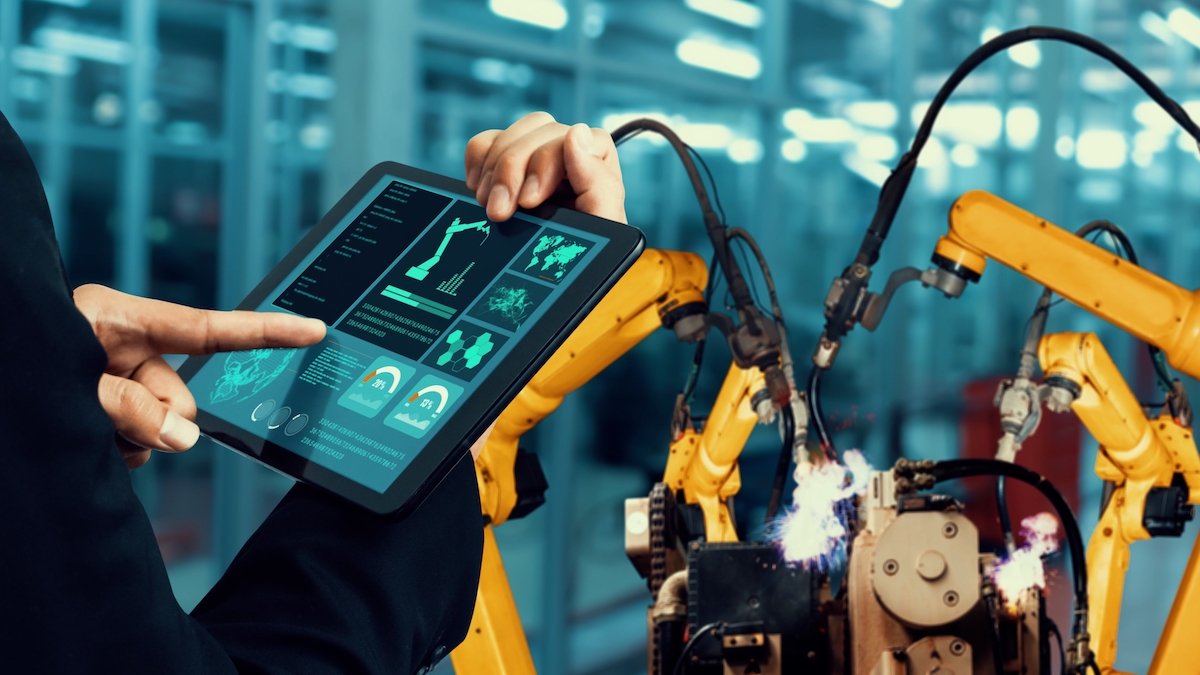From Overwhelmed to Optimized in Manufacturing: Overcoming Workload Challenges in Digital Transformation
In our extensive conversations with industry leaders across four continents, a recurring theme has emerged: the persistent challenge of internal resource constraints and overwhelming workloads in the realm of digital transformation. According to 2020 research by Gartner, 79% of organizations are currently in the phase of digital transformation, but many are struggling due to a lack of internal resources. Organizations striving to embark on this transformative journey often find themselves grappling with a lack of internal capacity or an excess of responsibilities that hinder their ability to fully dedicate themselves to their digital initiatives. In this article, we will delve deeper into this prevalent issue, providing practical insights and examples to help organizations overcome these hurdles and drive successful global digital transformation.
Digital transformation encompasses many interconnected projects, spanning various areas of an organization’s operations. From implementing robust customer relationship management (CRM) systems to integrating artificial intelligence (AI) technologies and launching a fresh new ERP system, each initiative demands a significant investment of time, effort, and expertise. However, limited internal resources and competing priorities often undermine the progress and success of these endeavors.
The manufacturing industry faces unique challenges when it comes to digital transformation
Resource constraints and heavy workloads can significantly impact productivity, agility, and overall competitiveness. Let’s explore how organizations in the manufacturing sector can address these challenges and optimize their digital transformation efforts. More about the Nine challenges of Industry 4.0
Embrace Industry 4.0 and Industry 5.0 as part of the strategy, from the top to the bottom (together)
Manufacturers can leverage Industry 4.0 technologies such as the Internet of Things (IoT), big data analytics, automation, and robotics to streamline operations and enhance productivity. By implementing smart factories and digitalizing key processes, companies can optimize resource utilization and reduce manual workload.
Furthermore, as the industry advances towards Industry 5.0, which emphasizes the integration of humans and advanced technologies, manufacturers can seize new opportunities to overcome resource constraints. This paradigm shift focuses on the collaboration between humans and intelligent systems, combining the strengths of automation and artificial intelligence with human creativity, problem-solving abilities, and adaptability.
Big data analytics plays a crucial role in extracting valuable insights from the vast amount of data generated by manufacturing operations. By leveraging advanced analytics techniques, such as machine learning and artificial intelligence, manufacturers can gain deeper visibility into their processes, identify optimization opportunities, and make data-driven decisions to allocate resources effectively.
Automation and robotics play a significant role in reducing the manual workload on employees and improving productivity. By automating repetitive and labor-intensive tasks, manufacturers can free up their workforce to focus on more strategic activities. Collaborative robots (cobots) can work alongside human operators, enhancing efficiency, reducing errors, and increasing overall production capacity.
By embracing Industry 4.0 and Industry 5.0 technologies, manufacturers can not only optimize resource allocation and workload management but also drive innovation, improve product quality, and enhance their competitive advantage in the global marketplace. This holistic approach empowers manufacturers to navigate the challenges posed by resource constraints while simultaneously embracing the opportunities presented by the latest advancements in digitalization and intelligent automation.
And of course, this approach has a lot to do with ESG. According to Gartner, 86% of corporate leaders view sustainability, a key pillar of ESG (Environmental, Social, and Governance) criteria, as an investment safeguarding their companies from potential disruptions. As ESG, particularly sustainability, has emerged as a critical concern for businesses, technologies underpinning Industry 4.0 are equipping organizations to perceive the commercial benefits of emphasizing these ESG principles and engaging in a circular economy. These technologies facilitate the identification of methods to reduce emissions, one of the environmental aspects of ESG, and expedite progress toward net-zero goals at an unprecedented rate.
“Ok, but this does not solve my problem…yet,” you might think.
Develop Digital Skills within the Workforce
Digital transformation requires a skilled workforce capable of operating and maintaining advanced technologies. According to a 2019 report by Deloitte, 62% of manufacturing companies view the lack of skilled labor as one of the main obstacles to implementing digital transformation. Manufacturers should invest in training programs to upskill employees in areas like data analytics, cybersecurity, and automation. By developing a digitally proficient workforce, organizations can efficiently manage digital initiatives and overcome resource constraints. It’s a change of mindset, not only acquiring new hard skills.
To develop digital skills within the workforce, manufacturers can establish comprehensive training programs that focus on building competencies relevant to digital transformation. These programs can include both classroom-style learning and hands-on practical experiences. Training sessions can cover topics such as data analytics, cybersecurity, cloud computing, automation, and emerging technologies specific to the manufacturing industry. Ideally, a hands-on approach would make this effort more valid.
Additionally, manufacturers can foster a culture of continuous learning and encourage employees to pursue professional development opportunities. This can involve supporting employees in attending industry conferences, seminars, and workshops or providing access to online learning platforms and certifications. By investing in the growth and development of their workforce, manufacturers not only enhance their employees’ capabilities but also create a talent pipeline of individuals equipped with the skills necessary to navigate the digital landscape.
Furthermore, industry leaders must establish partnerships with educational institutions, vocational schools, and industry associations to create tailored training programs. Collaborating with these organizations can ensure that employees receive relevant and up-to-date training aligned with the latest industry trends and technologies. Manufacturers can also explore apprenticeship programs or internship opportunities to attract young talent and provide hands-on experience in digital transformation initiatives.
In addition to developing digital skills, manufacturers must foster a mindset of innovation and agility within their workforce. Encouraging employees to think critically, embrace change, and experiment with new technologies and processes can drive continuous improvement and enable teams to adapt to the evolving digital landscape. Manufacturers can establish innovation labs or designated spaces where employees can collaborate, brainstorm ideas, and prototype solutions, fostering a culture of innovation and creative problem-solving. By investing in the development of digital skills and cultivating a culture of continuous learning and innovation, manufacturers can build a competent and adaptable workforce that can effectively manage digital initiatives. This ensures that the organization has the necessary internal resources to overcome resource constraints, drive successful digital transformation, and stay ahead in the rapidly changing manufacturing landscape.
You won’t need to do everything by yourself: getting strategic external partners
Manufacturers can overcome resource constraints by collaborating with technology partners that specialize in digital transformation solutions for the manufacturing sector. These partners can provide expertise in areas such as smart manufacturing, digital supply chain, and industrial automation. Companies can optimize resource allocation and accelerate their digital transformation journey by leveraging external capabilities. A report from Deloitte found that 57% of businesses cited a focus on their core business as a key reason for outsourcing IT functions, implying that partnerships with IT service providers help them to work more quickly and efficiently on their main business operations.
One effective approach is to engage with consultancies and technology companies that can embed themselves within your organization, collaboratively working alongside your team. This can be done through processes like design sprints or by utilizing services such as CTO-as-a-Service or CIO-as-a-Service. These arrangements involve allocating resources from the technology partner to work directly within your company on a day-to-day basis. They take ownership of managing the entire digital transformation project, acting as intermediaries between your organization and the technology provider. This allows your internal team to focus on daily operations, while the partner navigates between different areas and ensures alignment.
To successfully implement this approach, the C-level executives must be fully committed to the digital transformation journey. They should advocate for the involvement of external partners and actively engage in collaboration. Additionally, it is beneficial to have an internal champion who sponsors and supports the project. This champion can help facilitate communication, bridge gaps between teams, and ensure the successful implementation of digital initiatives. According to a study by PwC, more than 60% of CEOs globally believe that innovation through strategic partnerships will drive their company’s growth strategy.
By embracing external partnerships and leveraging their expertise, manufacturers can effectively address resource constraints while accelerating their digital transformation. This collaborative approach enables organizations to benefit from specialized knowledge, seamless project management, and streamlined communication channels. It allows companies to optimize resource allocation, enhance operational efficiency, and drive successful digital transformation outcomes.
Conclusion
According to a Gartner survey, over 50% of CEOs reported that digital improvements have led to increased revenue in their respective companies. Overcoming internal resource constraints and workload challenges in global digital transformation initiatives requires a multifaceted approach that encompasses strategic prioritization, cross-functional collaboration, external partnerships, talent development, and process optimization. By adopting these strategies and drawing inspiration from successful examples, organizations can optimize their resource allocation, manage workloads more effectively, and propel their digital transformation journey toward success on a global scale. More about 5 Steps on Your Journey Toward Industry 4.0
About the author
 This article was written by Fernando Pacheco, COO at PackIOT, an industrial tech company with clients in 12 countries, Fernando has over 15 years of experience in international business and operations, including 9 years in the SaaS industry, and is passionate about startups, technology, innovation, industry 5.0, and leadership.
This article was written by Fernando Pacheco, COO at PackIOT, an industrial tech company with clients in 12 countries, Fernando has over 15 years of experience in international business and operations, including 9 years in the SaaS industry, and is passionate about startups, technology, innovation, industry 5.0, and leadership.



